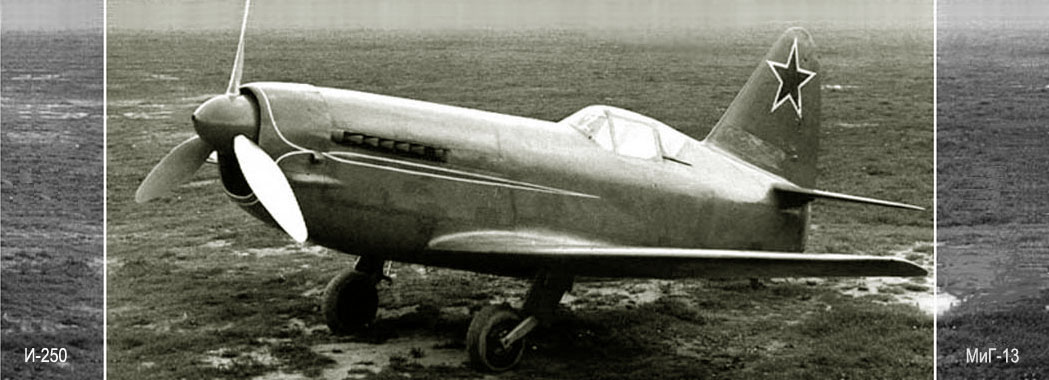
Aviation of World War II


 |
Aviation of World War II |


|
|
Soviet Union | Lend - Lease | Facts | Forum | Germany | Japan | R A F | U S A A F | Other | Photos |
|
|
MiG-13 (I-250)Naval fighterMikoyan, Gurevich
The I-250 combined power plant consisted of a VK-107A engine with a capacity of 1650hp. and the VRDK accelerator, created at TsIAM by K.V. Kholshchevnikov. The power developed by the piston engine was transmitted to two consumers at once: the propeller and the VRDK compressor. During takeoff and during flight without the use of the VRDK, the main power consumer was the propeller, and the VRDK compressor rotates in the lowest gear. To reduce the takeoff run and increase the flight speed to the maximum, the second, higher gear of the compressor drive was switched on, and fuel was supplied to the combustion chamber. The aircraft was equipped with a three-bladed AV-10P-60 propeller with a diameter of 3.1 m. The armament consisted of three 20 mm B-20 cannons (ammunition for 100 rounds). One cannon fired through the hollow shaft of the gearbox and two synchronous ones on the sides of the fuselage. March 3, 1945. the I-250 aircraft made its first flight. However, on July 5, 1945. during the next test flight, the first copy of the I-250 crashed, in which test pilot A.P. Deev. Due to a large overload, the stabilizer collapsed. The pilot left the plane, but because of the low altitude, the parachute canopy was filled too late, not having time to extinguish the pilot's fall speed. In May 1945. the second copy of the I-250 fighter was received for factory tests. After the catastrophe of the first instance, the stabilizer was strengthened on it, and the keel area was significantly increased to increase the directional stability at high flight speeds. |
|
|